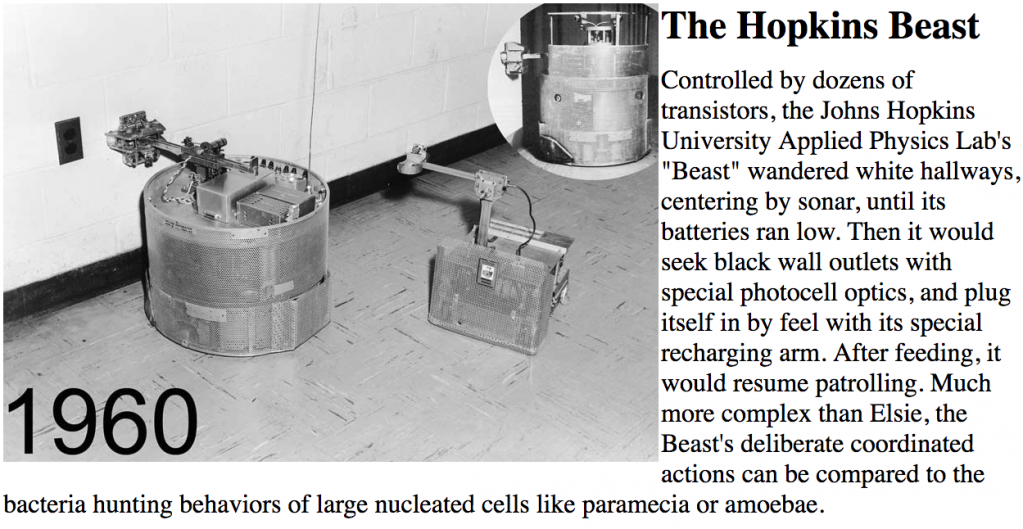A Brief History of Robotics at Johns Hopkins
Robotics research at JHU dates to the early 1960s, when researchers at the Applied Physics Laboratory (JHU APL) developed the Johns Hopkins Beast, a wheeled mobile robot that could navigate hallways and automatically locate and connect to wall outlets to autonomously recharge its batteries.

Robotics research at the Whiting School of Engineering (WSE) began with the arrival of Gregory Chirikjian (in 1992) and of Louis Whitcomb and Russell Taylor in 1995. In 1998, the NSF-funded Engineering Research Center for Computer-Integrated Surgical Systems and Technology (CISST ERC) had been established as a collaboration between the Whiting School and the School of Medicine, together with MIT, CMU, Brigham and Women’s Hospital and Shadyside Hospital as partners. This led to a significant expansion of the robotics research program, with an emphasis on medical robotics.
The Laboratory for Computational Sensing and Robotics (LCSR) was established in 2007 to provide infrastructure for a broader interdisciplinary program in robotics research. This coincided with the hiring of several additional faculty and a move to a custom-designed laboratory facility in Hackerman Hall.
Shortly thereafter the MockOR facility was created to support medical robotics and a separate underwater robotics facility was developed in Krieger Hall. A master’s program was established in 2013.
Today Johns Hopkins is widely regarded as one of the top robotics research sites in the world and is particularly well known for its work in medical robotics. The Robotics MSE program is regularly ranked in the top ten in the U.S.
Today, with the growth of AI, we are seeing a renewed push into all manner of intelligent systems across all application areas. In 2025, we will be celebrating the opening of a new major facility supporting Aerial robotics, and many new faculty who have joined as part of the larger effort at JHU to advance AI across the university.
Johns Hopkins University plays an important role in developing the workforce for an emerging market